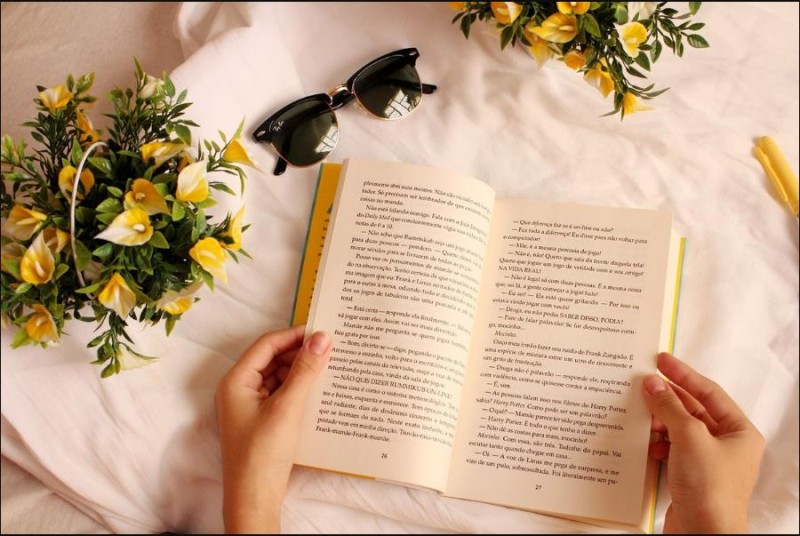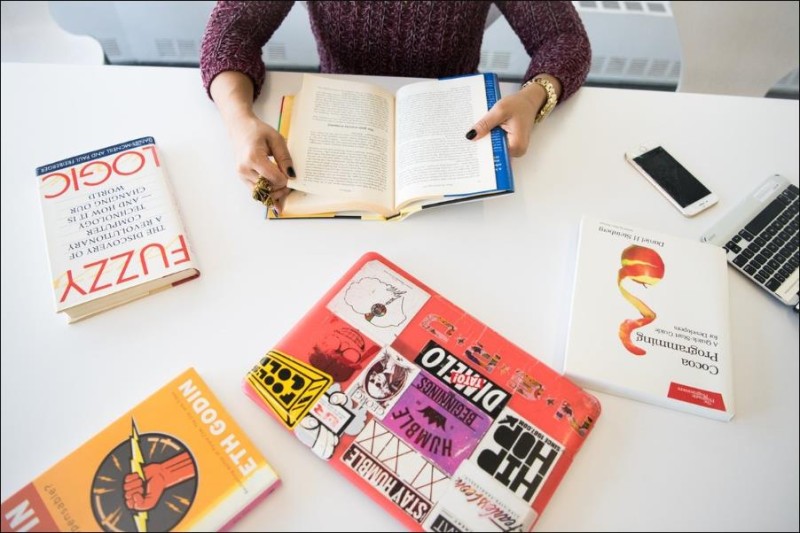你有没有因为书封而爱上一本书?据说有本书的封面,装帧精美,标题两个大字——“男人”。好奇的读者信手翻开,会发现里面一片空白。这当然只是个玩笑,兴许是笔记本,或者行为艺术。但它至少成功地让你把它,从书架上拿下来——翻开——进而可能因为设计而购买。
在琳琅满目的书店里,要让你完成这一系列动作,是出版社面临的大考。封面设计只是书籍出版过程的一小块。在电子产品围剿纸质书的时代,为了让你走进书店,取阅购买,出版机构在做些什么呢?
作家写的不是书,是手稿。
Authors don’t write books, they write manuscripts. Publishing is the process of getting an author’s manuscript into the hands of a reader, by materializing it – giving it form, as a book. this may be printed (a codex) or digital (an ebook).
作者写的不是书,他们写的是手稿。出版发行的过程就是把作者的手稿送到读者手中的过程,把手稿实体化——给它书的外壳。手稿可能会被印成纸质书,或者做成电子书。
The author’s manuscript is either solicited (the publisher asks them to write it) or unsolicited (the author writes it, then shops for a publisher). Being rejected is awful and publishing contracts are complicated, so many authors employ an agent to negotiate a deal with a publisher.
作者的手稿可能是征稿渠道来的(出版社会要求作者写书)或者是非征稿渠道来的(作者写完之后拿着手稿找出版社出售)。手稿被拒绝的滋味不好受,而且出版合同也很复杂,所以很多作者会雇佣代理人帮自己与出版社协商。

出版社内部分工明确,书籍内容及发行环境都有专人负责。
The “publisher” refers to either the publishing house (such as Penguin Random House), or the person whose title is Publisher. Within a single publishing house there may be several publishers, each overseeing a different list based on genre. For example, there may be a literary publisher, an academic publisher and a non-fiction publisher within the same publishing house.
“Publisher”这个词可以指代出版社(比方说企鹅兰登书屋),也可以指代拥有“发行人”头衔的管理者。一家出版社可能有多个发行人,每个人管理一个按文学体裁或流派分类的书单。比方说,一家出版社可能会有文学发行人、学术发行人、非虚构发行人等等。
Within the publishing house, different departments deal with different aspects of the publishing process. Editorial is concerned with content: ensuring the story/information is communicated in a clear and engaging way. Sales, Marketing and Publicity are concerned with context: figuring out where the book sits in the market, how to get it into bookstores, and reviewed.
针对出版过程的各个环节,出版社设置了不同的部门。编辑部关注的是内容,他们要保证故事/信息清晰地传达,且引人入胜。销售部、市场部、以及广告部关注的就是发行环境,他们要弄清楚该书籍的市场定位,怎样让书打入书店,以及如何让书评人写好评。
The designer is generally commissioned by the publisher or editor overseeing the title. Some publishers have creative directors, who commission (freelance) or assign (in-house) designers.
负责某本书的发行人或者编辑会委托设计师做装帧设计。有些出版社会有创意总监,他们会委托自由职业的设计师做设计,或者指派自己社内的设计师做。
装帧设计师需要兼顾内容与发行。
The designer is given a brief, a document that outlines the format (size and shape), production schedule, information about the content and context of the book including a blurb (a version of what end ups on the back cover), and passages that represent the writing style and plot. Some designers also read the full manuscript. Unless it’s a math textbook.
设计师通常会收到一份任务简介,里面说明了版式开本(包括大小和形状)、付印计划、关于书本内容和发行环境的信息,其中包括一份书的简介(即印在封底的内容)、以及能够代表写作风格与情节的原文段落等。有些设计师会通读手稿,除非那是一本数学教材。
Designers usually communicate directly with the publisher/editor, but need to respond to critical feedback from Sales/Marketing to develop a cover that communicates both the content of the book (evoking a sense of what it’s about and the writing style) and the context (ensuring it looks like it belongs to its genre, and is appealing to the intended audience).
设计师们通常与发行人/编辑直接联系,但也需要回复来自销售/市场部的挑剔反馈。他们设计出的封面需要传达书籍内容(引起受众对内容和写作风格的兴趣),还需要关照发行环境(确保书籍封面看起来像该体裁或流派的书,以及对目标受众有吸引力)。
This balance happens by showing “roughs” for different approaches. Designers usually present two to three different concepts, roughly mocked up to show how the final cover might look.
要达到这种平衡,设计师会用到不同的方法画多张草图。他们通常会画出2-3种不同的方案,然后做成印刷样品,看看最终的成品封面是什么样子。
A process of to-and-fro between editor, publisher, sales and marketing continues until everyone is happy.
这种在编辑、发行人、销售市场部之间来来回回的决策过程会一直持续到各方都满意为止。

封面设计一般七、八版,运气不好有可能达到50版。
A quick design process might involve seven or eight different iterations before a final design is chosen, followed by a process of fine-tuning (make the title bigger, try a script font, Marketing wants the author in gold foil, etc). A painful design process can involve dozens of covers; There is a record of 50 different approaches for the one cover. Excruciating.
通常快速的设计需要7-8个版本的迭代才能选出定稿,之后还需要做一些微调(把标题调大一点儿、换一个正文字体、市场部要求作者的名字用金箔等)。碰到磨人的设计,要做出几十个封面,最高记录是做了50个版本的封面。太痛苦了。
People are often surprised how little input authors have in the design process, considering the cover is how their book first faces the world. It’s important to consider two factors.
有些人总是惊讶于作者很少参与设计过程,因为封面是这本书首次面世的样子。但有两个重要因素需要考虑到。
First, most authors are happy to defer to the publisher about how to sell as many copies of their book as possible; publishing is a commercial business and the publisher knows the market.
第一,对于如何尽可能让书畅销这件事,作者们很乐意听出版社的意见。出版发行是商业行为,而且出版社通晓市场行情。
Second, while the design process is happening, the author is generally in the last harrowing stage of editing their manuscript and doesn’t want any distraction. This said, if an author hates a cover it will go back to the drawing board, but if everyone has done their job well this shouldn’t happen.
第二,设计过程进行的同时,作者们通常还处在改稿的最后阶段,痛苦到不想被任何事情打搅。话虽如此,如果某个作者不喜欢某个封面,那么这个设计就会推倒重来。不过如果各个环节都没出问题,这种情况也不会出现。
once the design is finalized, digital files are sent to a production house so copies of the book can be printed, bound and delivered to the publisher’s warehouse, from where they will be shipped to bookstores when wanted.
设计一经定稿,出版社就会把数字版发给印刷厂,然后书就被印出来了,接着打包运送到出版社的仓库里。出售的时候,书也就从那里运往书店。
有些人格外喜欢某一本书,在读完平装版之后,会专门买精装版回来收藏。
美观且易于保存的精装书中就凝结了出版人的心血。







